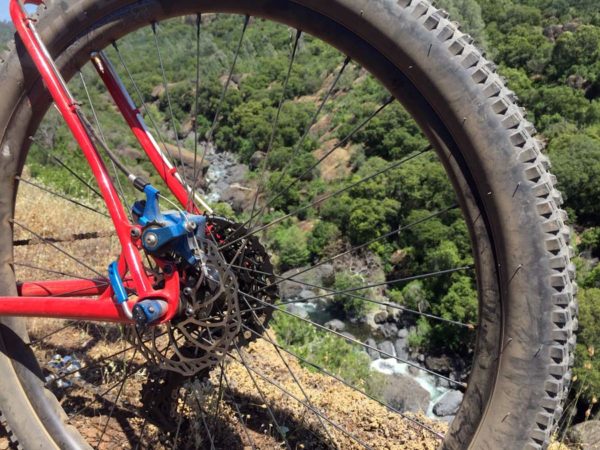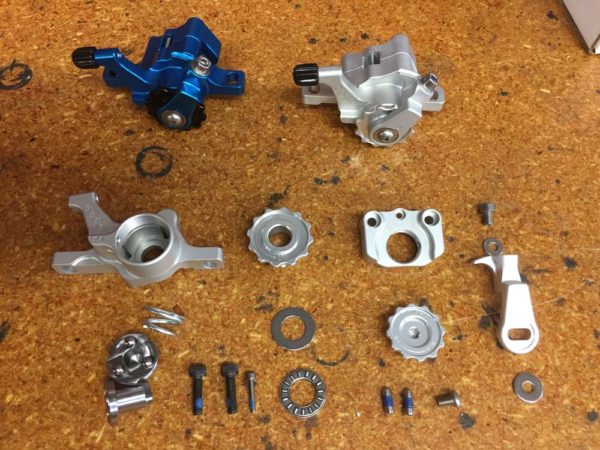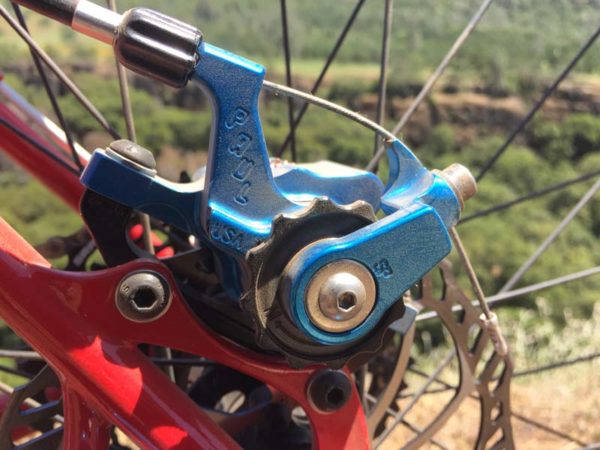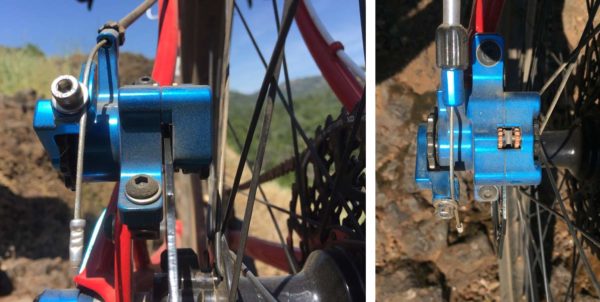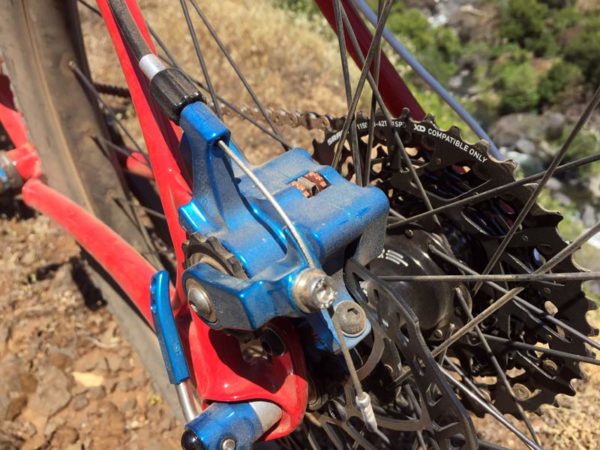When Paul Component’s Klamper disc brake caliper debuted, it looked big and clunky. I supposed it had appeal to Paul fans who wanted to match everything up, but I preferred the streamlined aesthetics and dual pull of the TRP Spyre. But sometimes, function overcomes form, and having ridden the Klampers for two days of #PaulCamp around their California headquarters, my mind has been expanded. There’s a reason they’re so big, and it’s a good one…
Riding alongside Paul himself, I remarked that I couldn’t feel any pad movement. Normally, and this even happens with high end hydraulic brakes from a major brand, there’s noticeable pad movement. At a stop, if I grab the brakes and rock the bike back and forth, there’s wheel movement. It’s only a couple degrees, but at the outside of the tire’s circumference, that adds up to a centimeter or more of rotation.
Does that matter? Maybe not for normal riding, but it’s annoying, and for brakes that cost a lot of money and are designed to stop with precision, it shouldn’t be acceptable. And that seems to be Paul’s opinion, too.

Paul remarked “We worked really hard on that, to get the tolerances very tight.” And it shows. There’s literally no movement when trying to rock the bike back and forth. The slots the pads nestle into have just enough room to allow uninhibited lateral movement, but leave nothing for fore/aft slack.
The reason the Klamper’s are so big is because they wanted to make the calipers extremely rigid. That’s why they didn’t end up with a dual pull design that would move both pads inward toward the rotor. They did consider it, and even tried to figure out how, but Paul told me the end result would be caliper body parts that were too thin and flexible to offer appropriate stopping power.
To make the best of it, they did build in dual pad adjustments, letting you dial in starting pad position for both sides, which makes set up much, much easier. And the barrel adjuster on the cable helps fine tune it further. They offer two versions, one each for short pull and long pull brake levers, and if you’re not sure which you need, just check with them before ordering. There’s also color options, like the new limited edition Blue shown here.
All of these features (except, perhaps, the colors) add up to a very impressive brake caliper. Paul’s attention to details and unwillingness to compromise function for form mean the brakes work far better than any single-pull mechanical caliper I’ve ever ridden. And, honestly, they give the TRP HyRD mech-to-hydro calipers a serious run for their money while being a lot easier to set up. And I should state that the form isn’t really bad…it’s just big, particularly for a road bike…and it’s growing on me. But I’d take them any day based purely on their performance.
I didn’t get them on my own scale as they were already attached to my demo bike, but claimed weight is 211g per wheel, without cables. Price is $184 per wheel, available in black, silver and, for a while, blue, with the option of orange adjustment dials or black/silver to match the caliper body.
Oh, and they are working on a flat mount version, but it’ll likely be 2018 before that goes on sale.

